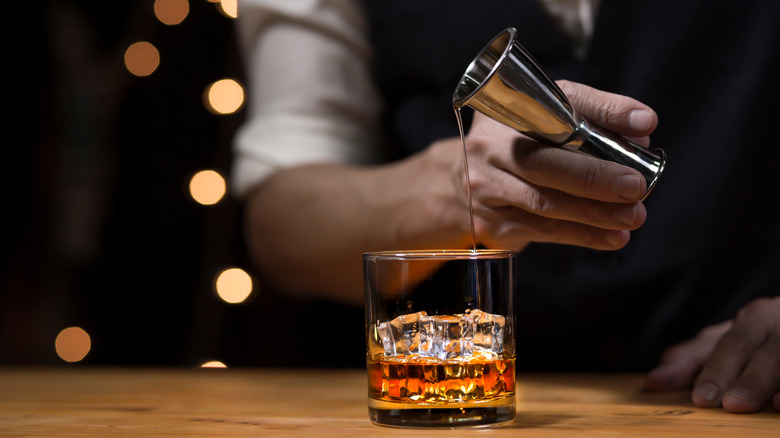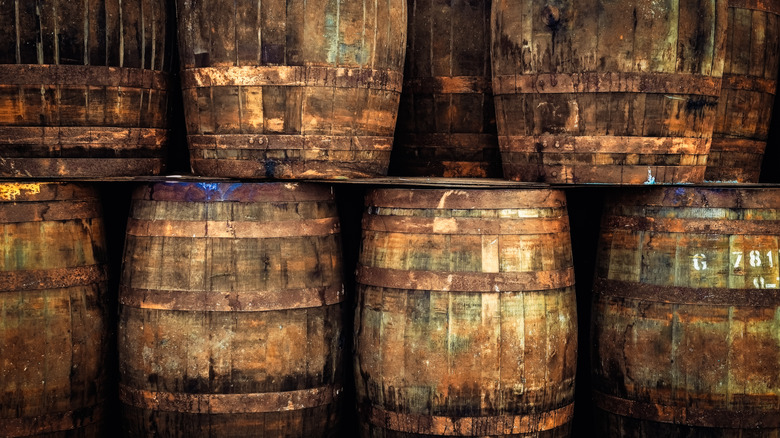Why Eagle Rare Bourbon Is Aged In 'Alligator' Barrels
By law, bourbon must be matured in charred oak barrels. Charred barrels lend both color and tasting notes to the spirit, which is important since U.S. legislation also dictates that no additional coloring or flavors can be added to the liquid. But when it comes to charring barrels, distilleries have room to play.
The charring of barrels is ranked on a scale from 1 to 7. The level at which at barrel has been charred will provide different characteristics to not only the wood of the barrel itself but also to the aging beverage that is stored inside. The higher end of the spectrum, 6 and 7, isn't normally used by distilleries, but the middle category, described as a level 4, is a preferred choice for many labels. A level 4 char results in what is called "alligator char," the product of an almost one-minute burn that turns the surface of the barrel into a texture that looks like the skin of an alligator.
Aiming for Level 4
While some distilleries char barrels for minutes at a time, 15 to 60 seconds is the preferred method by the majority of brands. This length of time creates the alligator skin texture on barrels, and brands like Eagle Rare set out to bottle blends in barrels that have a cracked texture and areas of shiny carbonized gleam. Maturing bourbon in oak barrels charred at this level can result in deeper colors of the golden spirit and a spicier drink in your glass.
"When charring at this level, the wood starts to peel off the barrel, which gives the liquid more surface area to come in contact with, thus infusing it with more flavor. This offers a surprising amount of variation. On one side, you get a subtle vanilla palate from the wood, but by using a No. 4 char, you're also adding a smoky, char flavor that contrasts nicely with the sweeter notes," Master Distiller Eddie Russell explained to Tales of the Cocktail.
While you may also see bourbon aged in toasted barrels, the heat used to scorch these barrels is applied at lower temperatures for longer periods of time, so instead of a flash flame, a longer, slower heating process results in wood more deeply impacted by heat. Notice the labels on the next brands you sample to compare the flavor profiles of the different blends you try.

